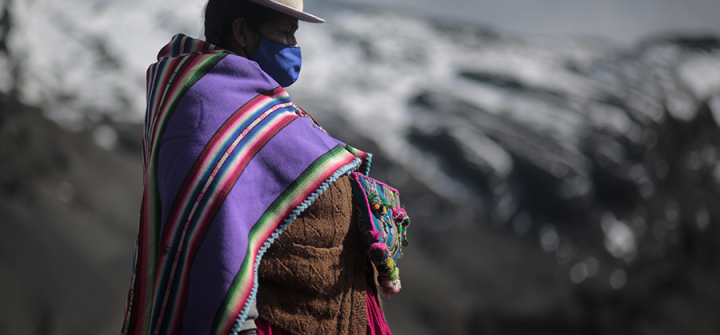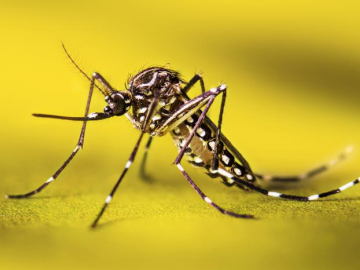“You Carry Your Suffering Alone”: COVID-19’s Extra Burden on Women
While men and women face a roughly equal risk of being infected by the coronavirus, women are nearly 3X more likely to report mental health impacts from COVID-19, according to a survey released today by the nonprofit CARE.
The survey of more than 6,200 women and 4,200 men in 38 countries revealed a chasm between how men and women are experiencing the pandemic:
- 27% of women considered mental health one of the pandemic’s major impacts, while just 10% of men reported the same.
- 55% of women interviewed said income loss was one of COVID-19’s biggest impacts; only 34% of men said so.
- 41% of women reported experiencing inadequate food as a result of COVID-19; and only 30% of men reported the same.
In this Q&A, Emily Janoch, author of the report and director of Knowledge, Management, & Learning at CARE, takes GHN inside the numbers and explains how the pandemic has worsened existing inequalities between women and men—and why it’s essential to know the “story behind the numbers” to get to effective solutions.
Women are 3X more likely to report mental health impacts from COVID, according to your survey. Why is that?
There are a few reasons for this. One is that women are facing skyrocketing burdens of unpaid care work, increasing mobility restrictions, threats of violence, and other issues that affect their mental health. Those issues are all hitting women harder than they are men.
Another key reason is that men are dramatically less likely to report or prioritize mental health issues than women are, even in non-COVID times. This is because most societies teach men that admitting to mental health issues is weak and not masculine enough. That doesn’t mean that men don’t experience mental health challenges, but there is a long history and social conditioning for men not to focus on those issues.
Are the differences between how women and men experience the pandemic consistent across low-income and high-income countries? What about across regions?
There are a lot of similarities across high-income and low income countries overall. Women are spending more time on unpaid care work than they used to and much more time than men do. Similarly, economic impacts and job loss are more common and more extreme for women in almost every piece of research CARE has done. There are some differences between countries in different income brackets. For example, the gaps in access to information are less extreme in higher income countries.
There are definitely regional and country differences as well. For example, countries in Asia and Latin America are seeing much bigger impacts of cross-border migration and COVID-19. For example, 300,000 people have returned to Afghanistan because they lost their jobs and income. In Thailand, migrants report losing 50% of their income. Refugees are at special risk because they were already living in precarious situations with little access to hygiene, healthcare, food, or economic opportunities. So, countries that have high refugee populations, such as Bangladesh, Uganda, Ecuador, or Jordan, are having to work especially hard to overcome those challenges and find safe ways to get supplies and care to refugees.
In all of this data, what distressed you the most? Surprised you the most?
[There’s] a distressing predictability in how crisis reinforces existing inequalities, and how the people in power who are making decisions at all levels (most often men) will lean on existing scripts, biases, and power structures that not only fail to solve the problem, but often make matters worse. It’s also hard to see how many women who have been showing tremendous leadership and resourcefulness—often for years before the crisis—are running out of options and the safety nets they have managed to build for themselves. They’re losing access to rights and opportunities that they have been working for years to claim.
It’s not a surprise, but it’s so inspiring to see the ways women finding solutions even in this crisis. We’re seeing women in Cote d’Ivoire connecting to plant rice in each other’s fields so that there will be food this year. A group of women in Bangladesh pooled their savings—only a few dollars each—to offer food to beggars in the community because it’s not safe to beg during COVID-19.
Countries are clearly not meeting the needs of women whose mental health has been affected by COVID-19. What proven responses can be scaled up?
One obvious answer is helping find ways to connect to each other, even in COVID-19. A woman in West Africa described the biggest challenge of COVID-19 as, “You carry your suffering alone because women cannot even come to keep you company and console you anymore.” So, helping women to connect with each other is critical. In Uganda, refugee women themselves have organized safe spaces to process the challenges they are facing. In Bangladesh, safe spaces in Cox’s Bazar refugee camps are a critical component of mental health, and they have allowed 97% of women to feel safer. In Ecuador, the team designed an app for women to connect to mental health support and [gender-based violence] services to make up for the dramatic reduction of in-person services. What it looks like to scale these services is different in every context. In Ecuador, the app is a great solution. In West Africa, the teams are mostly using phones, WhatsApp, and text messages.
Another key solution is helping reduce the unpaid care burden. Partly that’s about encouraging men to help more with housework. In Mali, especially in cities, the CARE teams are starting to see more men help around the house and with childcare, which goes a long way to reducing some of the key stresses women are facing right now. Using COVID-19 messaging as a way to reinforce issues around mental health, what services are available, and how men and women can work together is a solution that many actors can scale quickly.
Deep inequities between men and women in many countries go way back in history. What’s the best way to address women’s needs in the middle of a pandemic?
The biggest solution is to listen to what women say they need, and then address that. There are several pieces to that, such as filling the data gap—looking at differences between men and women in COVID-19 testing, job loss, access to safety nets, etc.
It also includes listening to women’s firsthand accounts. We often see that even when the statistics look similar for men and women, the stories they are telling are different. For example, in Nigeria, young men and young women are both saying livelihoods are a problem. But when you look at the interviews, young men are speaking in terms of not meeting their personal income goals, and young women are talking about the fact that they can’t feed their kids. Understanding that nuance—and the story behind the numbers—is the only way to design solutions that work. And then you have to design solutions that target those needs. If women are saying they need food, and the program is handing out soap, we haven’t done our jobs.
Finally, making sure women have a seat at the table—at all levels—is something that all actors can do even in a pandemic. There shouldn’t be any committees making decisions that don’t have women on them, or only have 1 token female representative. There need to be enough women at the table—more than the 24% on average we see now—so they can influence decisions.
Ed. Note: This interview has been edited for length and clarity.
GHN's latest coverage of the coronavirus is available here.
And, please send GHN any questions you'd like to see answered related to the coronavirus outbreak. Just email Dayna (dkerecm1 at jhu.edu).
Join 50,000+ subscribers in more than 170 countries who rely on Global Health NOW summaries and exclusive articles for the latest public health news. Sign up for our free weekday newsletter, and please share our free subscribe link with friends and colleagues.
A woman wearing a mask watches a traditional ceremony in La Paz, Bolivia on September 21, 2020. Image: Gaston Brito/Getty Images





